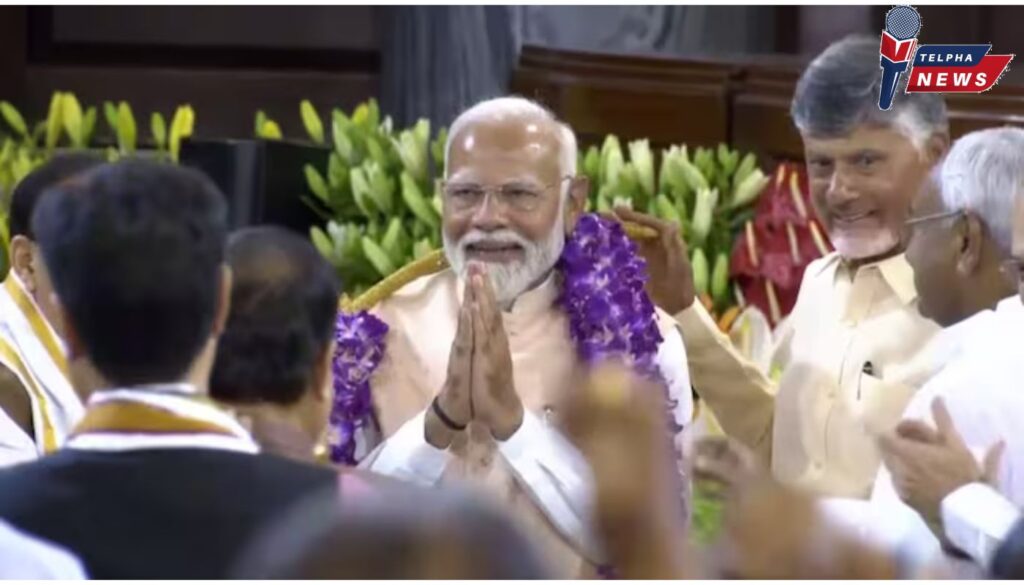
The 2024 Indian General Elections will be remembered as a pivotal moment in the country’s political history. Despite being projected to secure a resounding victory, the Bharatiya Janata Party (BJP) fell short of a simple majority in the Lok Sabha, winning 240 seats, a significant decline from the 303 seats it secured in 2019. This surprising turn of events has ushered India back into an era of coalition politics, with the National Democratic Alliance (NDA) securing 293 seats. On the other hand, the Opposition coalition, INDIA, performed better than expected, marking a significant shift in the political landscape.
The Fall of a Political Giant
The BJP’s inability to secure a simple majority raises several questions about the party’s strategy and the changing dynamics of Indian politics. Prime Minister Narendra Modi, a leader known for his popularity and charisma, was expected to lead the BJP to a decisive victory. Pollsters and political analysts had projected the party to cross the 370-seat mark. However, the BJP’s tally fell short by 32 seats, forcing the party to rely heavily on its key allies, the Janata Dal (United) and the Telugu Desam Party.
The Opposition’s Remarkable Performance
One of the most striking aspects of the 2024 elections is the performance of the Opposition coalition, INDIA. Despite initial perceptions of disunity and lack of preparedness, the Opposition managed to mount a formidable challenge against the BJP. This success can be attributed to several factors, including strategic alliances, effective campaigning, and capitalizing on the BJP’s weaknesses.
Regional Dynamics and Strategic Failures
Northern and Western India
In 2019, the BJP had a stronghold in the northern and western parts of India, winning 81% and 65% of the seats respectively. However, in 2024, the party faced significant losses in key states like Rajasthan, Madhya Pradesh, Chhattisgarh, Gujarat, Himachal Pradesh, Uttarakhand, Delhi, Bihar, Maharashtra, Karnataka, and Jharkhand. These losses can be attributed to a combination of voter fatigue, strong opposition campaigns, and internal party issues.
Southern and Eastern India
The BJP’s strategy to compensate for losses in the north and west by focusing on the east and south did not yield the expected results. Despite efforts to gain seats in West Bengal, Odisha, Telangana, Andhra Pradesh, Tamil Nadu, and Kerala, the party’s performance in these regions was below expectations. The inauguration of the Ram Mandir in Ayodhya and a spirited campaign by Prime Minister Modi failed to significantly sway voters in these states.
Key Losses and Gains
- Uttar Pradesh: The BJP suffered its biggest loss of 29 seats, including the Ayodhya seat (Faizabad).
- West Bengal: The party lost six seats to Mamata Banerjee’s Trinamool Congress.
- Haryana: Five seats were lost due to Jat anger.
- Bihar: Five seats were lost to a rejuvenated Opposition.
- Maharashtra: The BJP lost 14 seats, a significant blow attributed to voters’ rejection of the party’s politics.
- Rajasthan: The party lost 10 seats due to internal ticket mismanagement and Rajput anger.
- Karnataka: Eight seats were lost due to the Siddaramaiah government’s welfare policies.
- Jharkhand: The BJP lost three seats due to sympathy for Hemant Soren after his arrest.
Vote Share Analysis
In terms of vote share, the BJP experienced significant losses in Uttar Pradesh, Haryana, Jharkhand, Karnataka, Manipur, and Rajasthan. Conversely, the party made gains in Telangana and Andhra Pradesh. In Uttar Pradesh, the BJP’s vote share dropped from 25% in 2014 and 20% in 2019 to just 14% in 2024, significantly impacting its overall seat tally.
BJP-Congress Direct Contests
In 2019, the BJP had a strike rate of 92% in direct contests against the Congress, winning 175 of the 190 seats. In 2024, the number of direct contests increased to 215, with the BJP winning 153 seats (a strike rate of 71%) and the Congress securing 62 seats. This shift contributed to the Congress almost doubling its tally to 99 seats, pulling down the BJP’s overall numbers.
Conclusion: The Return of Coalition Politics
The 2024 Indian General Elections have marked the return of coalition politics in India. The BJP, despite its popularity and previous electoral successes, will now have to navigate the complexities of coalition governance. The Opposition’s strong performance indicates a more balanced and competitive political landscape, setting the stage for a dynamic and potentially unpredictable future in Indian politics.
As political analysts and commentators dissect the results, one thing is clear: the 2024 elections have reshaped the Indian political landscape, challenging established narratives and opening new avenues for political engagement and strategy. The coming years will reveal how these changes impact governance, policy-making, and the broader trajectory of the nation.